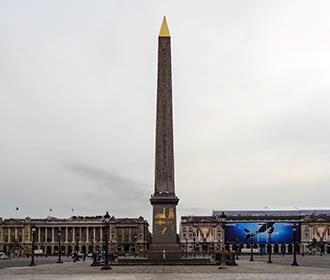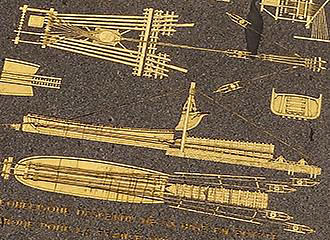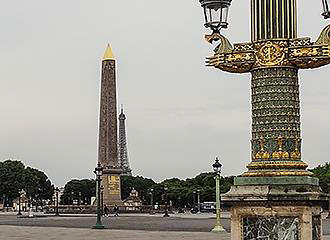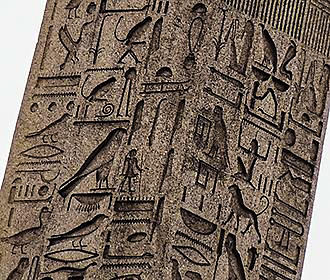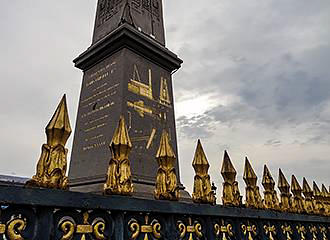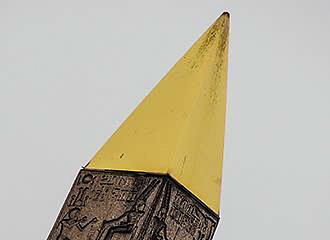Paris Luxor Obelisk Monument at Place de la Concorde
There are many Paris monuments that you can get to see, many of which are located in famous squares, or are fabulous buildings with impressive architecture like the Notre Dame Cathedral, but when thinking about which is the oldest Paris monument, many people do not think of the Luxor Obelisk.
Now this could be classed as a trick question, as some of the Paris landmarks date back to medieval times and they actually originated in Paris, but the column which is known in French as the Obelisque du Louxor is far, far older, yet has only been in Paris since the 1800s.
The origins of the Paris Luxor Obelisk Monument
The Paris Luxor Obelisk monument is over 22 metres tall, weighs in at around 250 tons and was originally one of a pair of obelisks that were positioned outside the Luxor temple in Egypt, within the city of Thebes that is now known as Luxor.
Also this particular Luxor Obelisk dates back over 3,300 years and is made of red granite, it has hieroglyphics from the Egyptians that depict the rule of Ramses II and Ramses III, which means that the Luxor Obelisk is a major monument for the history of the world, yet alone Paris.
There was also an original pyramidion, which is basically the cap on the top in the shape of a pyramid, and there was one located on the top of this Obelisque du Louxor column decorated in gold leaf, but it is believed that the original was pilfered in the 6th century BC.
How the Luxor Obelisk Monument came to Paris
It was Muhammad Ali, who was the first governor of Egypt, also known as Mehmet Ali Pesha, who decided offered the two obelisks from the Luxor temple to the French, this was during the time when he had decided to dramatically reform the military, cultural and economic aspects of Egypt.
And it was then through the efforts of Jean Baptiste Apollinaire Lebas that these two ancient Obelisk columns were presented as a gift to King Charles X by the Egyptian Viceroy Mehmet Ali, yet even before the first of the two obelisk was even destined to arrive in Paris, King Charles X had already abdicated from the throne and King Louis Philippe took over.
So, it was under the reign of King Louis Philippe I of France that a steam paddle ship by the name of the Sphinx, which was the first naval steamer, went to Alexandria that was the second largest city in Egypt at the time.
It was there that the steamer met up with a large barge in order to transfer the first Luxor Obelisk or Obelisque du Louxor back to Paris, and they eventually arrived back in France at Cherbourg port within the Basse Normandie region in the August of 1833, and eventually the obelisk arrived in Paris in the December of the same year.
However, it was three years later before the Paris Luxor Obelisk monument was erected in the largest Paris square called the Place de la Concorde, which was after the original statue in the square was removed, which meant that when you look at the history of Paris, there was no more reminders of the bloodshed that had occurred here during the French Revolution.
And in recognition of this King Louis Philippe presented a large clock to Mohammed Ali in return for the obelisk, and this is in fact still in place in the clock tower of the mosque, which is at the summit of the Citadel of Cairo, but the second obelisk still remained in Egypt.
In fact, it was only under President Francois Mitterand that the second Luxor Obelisk was to remain within Egypt, as he renounced the French claim to this as a symbolic gesture and one of peace between nations.
Erecting the Paris Luxor Obelisk monument and how it is today
Because the technology and engineering science was at its early stages when the Paris Luxor Obelisk monument or Obelisque du Louxor was originally brought to Paris, the effort, manpower and expertise was tremendous.
And because of this, the monolith stands on a pedestal that portrays the procedures and the different devices that were used in order to erect the Luxor obelisk in its chosen position in the middle of the Place de la Concorde square.
In fact according to many different accounts, the pulleys that were being used to erect the Paris Luxor Obelisk monument had reached their limit, but apparently one of the onlookers who was a sailor shouted out to moisten the ropes, because he knew that hemp ropes always shrunk when they were drying out!
Now, as we mentioned earlier, there was originally a cap on the top of the obelisk called a pyramidion, and after the monolith was erected the people started urging the French Government a the council of Paris to restore this to its former glory.
However, this never happened at the time and remained the same for many, many years, but in 1997 the French President, Jacques Chirac, agreed to the project of installing a pyramidion back onto the top of the monolith.
The pyramidion is made of bronze and gold leaf and being three metres in itself, was added to the Paris Luxor Obelisk monument in the May of 1998, as part of the celebrations to mark Franco-Egyptian relations.
And although some people do feel that this addition seems almost too new and shiny compared to the rest of this old Paris monument, it is, however, now known as the most cheerful obelisk in the world for what it represents.
So when you are on holiday in Paris, you can now get to see the Paris Luxor Obelisk monument in all its glory, but the Place de la Concorde also has even more history and heritage than just this monument, and is well worth a visit.
Visiting the Paris Luxor Obelisk Monument
When it comes to reaching the Paris Luxor Obelisk Monument, which is located in between the two fountains of the Place de la Concorde, you will find that the nearest Metro station is called the Concorde stop serving Lines 1, 8 and 12, and can be found on the corner of this famous square at the beginning of the Rue de Rivoli, next to the Jardin des Tuileries.
However, walking in a northerly direction you can get to the Madeleine stop that serves lines 8, 12 and 14, yet in a westerly direction walking up the famous Avenue des Champs Elysees you have the Champs-Elysees - Clemenceau stop serving Lines 1 and 13.
There are also several Paris bus lines that will get you close by to this historical monument including 24, 42, 72, 73, 84, 94 along with the Noctilien Night Bus Service via lines N11 and N24, but the nearest RER train station is the Invalides stop on the left bank of the River Seine, which serves the RER C Line.
